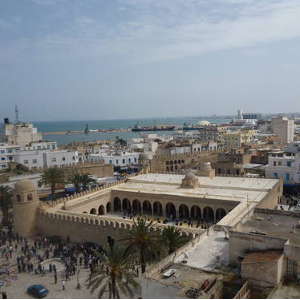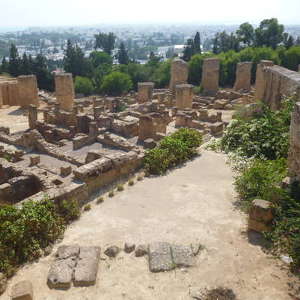Using AI to control energy for indoor agriculture
30 September 2024
Published online 22 October 2018
Sea level rise threatens Mediterranean UNESCO heritage sites.

Christian Manhart / UNESCO
A study, published in Nature Communications, reports that of 49 World Heritage Sites located on low-lying Mediterranean coasts, 37 are at-risk from floods and 42 from coastal erosion. Flood risk may rise by 50% and erosion by 13% across the Mediterranean, with risks at some individual sites considerably higher.
Researchers in Germany and the UK analysed risk indicators including the frequency and height of storm surges, flood depths, and the extent of exposure to flood for each site. The distance of World Heritage Sites from the coast, costal characteristics, and the sensitivity of each site to erosion were also examined.
Among the sites, three in Tunisia were found to be at-risk of sea flooding and erosion.
These are the ancient Phoenician city of Kerkuane and its necropolis, located in north-eastern Tunisia; the archaeological site of the ancient trading city of Carthage on the Gulf of Tunis, founded in the 9th century BCE; and the eastern Medina of Sousse, a historical military and commercial port.

Christian Manhart / UNESCO
Improving the risk preparedness of these sites will be key to their survival, says Gina Doubleday, associate project officer at the World Heritage Unit in UNESCO.
“The future of many of our World Heritage Sites looks bleak if carbon emissions — the root cause of climate change — cannot be addressed effectively,” she adds.
Small tidal ranges and steep topographies in coastal areas have so far allowed ancient and modern human civilizations to prosper on the Mediterranean waterfront.
Coastal areas, including the historical sites they harbour, are becoming increasingly vulnerable to damage by sea level rises resulting from climate change. The researchers report that this particular consequence of climate change is significantly understudied, rendering this study crucial to our understanding of possible scenarios involving the fate of the Mediterranean’s heritage sites, as well as different adaptation options. “Developing and analysing large linked datasets of historic places and locations is essential if we are to have any hope of effectively selecting sites and areas for examination, documentation, relocation or protection,” says anthropologist David Anderson of the University of Tennessee, USA, who was not involved in the study.
“One path of future research will be to conduct national to local scale assessments using a refined methodology as a basis for developing more specific adaptation strategies at a smaller number of sites or at individual sites,” says Lena Reimann, corresponding author of the study, and doctoral researcher at the department of geography at Germany’s Kiel University.
doi:10.1038/nmiddleeast.2018.128
Reimann, L. et al. Mediterranean UNESCO World Heritage at risk from coastal flooding and erosion due to sea-level rise. Nat. Commun. 9, 4161 (2018).
Stay connected: